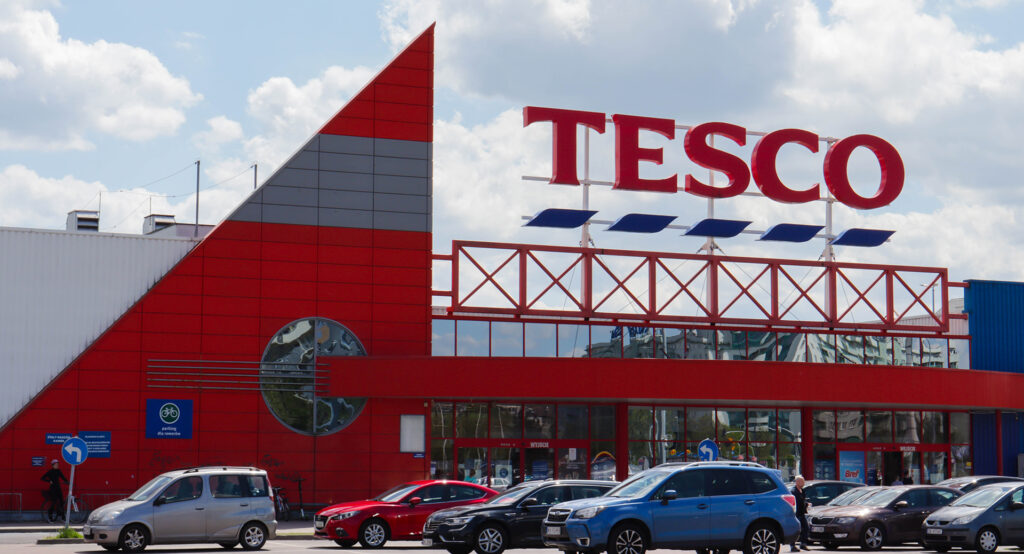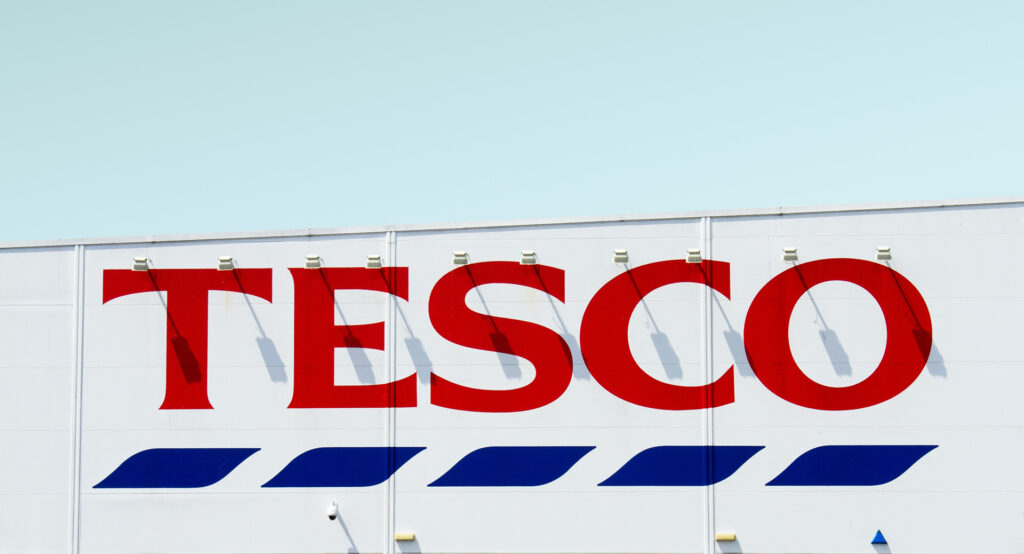Here are 15 interesting facts about Tesco
From a Market Stall to a Global Retail Giant: The Amazing Story of Tesco.
Tesco is one of the world’s largest retailers, with a presence in 12 countries and over 6,000 stores worldwide. From its humble beginnings as a market stall in London in 1919, Tesco has grown to become a household name, known for its wide range of products, affordable prices, and innovative customer services.
Here are 15 interesting facts about Tesco:

The name “Tesco” was created by Jack Cohen, the founder of the store.
1 Cohen began his business by selling surplus groceries from a market stall in the East End of London in 1919. He used his savings to purchase tea and other goods, which he then sold from his stall.
In 1924, Cohen decided to create his own brand of tea and used the initials of his supplier, TE Stockwell, to create the name “Tesco.” The first Tesco store was opened in 1929 in Burnt Oak, Middlesex, and the brand has since become one of the largest retailers in the world.
The first Tesco store was opened in Burnt Oak, Middlesex, in 1929.
2 The store was located at 54 Watling Street and was a small, self-service grocery store that sold a range of products at affordable prices.
This store was the beginning of what would become a global retail giant, with Tesco expanding rapidly over the years and opening stores in many countries around the world. Today, Tesco is one of the largest retailers in the world, with over 6,000 stores and a presence in 12 countries.
Tesco introduced its own-brand products in 1924, with the first product being Tesco Tea.
3 This was a significant move for the company, as it allowed them to offer customers high-quality products at affordable prices. Over the years, Tesco has expanded its range of own-brand products, which now includes everything from food and drink to clothing and household goods.
Today, Tesco’s own-brand products are a major part of the company’s business, with many customers choosing to buy them for their quality and value.
The Tesco logo has changed several times over the years, with the current logo featuring a stylized “T” in red and blue.
4 The first Tesco logo, which was introduced in 1924, featured the name “Tesco” in black lettering with a red background. Over the years, the logo has been updated and modernized several times, with new designs being introduced in 1970, 1996, and 2013.
The current logo was introduced in 2013 as part of a major rebranding effort, which included changes to the company’s stores, products, and advertising.
Tesco was the first retailer to introduce a loyalty card scheme in the UK, with the launch of the Tesco Clubcard in 1995.
5 The Clubcard was a revolutionary concept that allowed customers to earn points on their purchases, which they could then redeem for rewards such as discounts on future purchases, vouchers for days out, and even holidays.
The scheme was a huge success and helped Tesco to build a loyal customer base. Today, many other retailers in the UK and around the world have introduced their own loyalty card schemes, but the Tesco Clubcard remains one of the most popular and successful.
According to the Deloitte Global Powers of Retailing report, Tesco is currently ranked as the third-largest retailer in the world, behind Walmart and Amazon.
6 This report ranks the top 250 retailers in the world based on their retail revenue and other key metrics. Tesco’s ranking is a testament to the company’s success and growth over the years, as it has expanded from its roots as a small market stall to become a global retail giant with a presence in 12 countries.
Despite facing increased competition from online retailers like Amazon, Tesco has continued to innovate and adapt to changing market conditions, and remains a major player in the retail industry.
Tesco opened its first zero-carbon store in Ramsey, Cambridgeshire.
7 The store was designed to be highly energy-efficient, with features such as solar panels, a wind turbine, and a rainwater harvesting system. It also had a range of other eco-friendly features, such as LED lighting, an air-source heat pump, and a natural refrigeration system.
The store was a significant milestone for Tesco’s sustainability efforts, and demonstrated the company’s commitment to reducing its environmental impact. Since then, Tesco has continued to invest in renewable energy and other sustainable initiatives, and has set ambitious targets for reducing its carbon footprint and waste.
Tesco has a strong commitment to supporting charitable and community initiatives, and has a long history of giving back to the communities in which it operates.
8 The company has supported a wide range of charitable causes over the years, including cancer research, children’s charities, and local community projects. Tesco’s charitable efforts are driven by its core values of being a good neighbor, supporting local communities, and making a positive difference in people’s lives.
The company encourages its employees to get involved in charitable and community initiatives, and also supports a range of employee-led charitable activities. In addition to its charitable efforts, Tesco is also committed to sustainability and reducing its environmental impact, and has set ambitious targets for reducing its carbon footprint and waste.
In 2015, Tesco announced that it would be phasing out the use of single-use plastic bags in its stores, in an effort to reduce plastic waste.
9 The company introduced a 5p charge for plastic bags in 2015, and then went on to completely eliminate single-use plastic bags from its stores in 2018. This move was part of a wider effort by Tesco to reduce its environmental impact and promote sustainability.
In addition to reducing plastic waste, Tesco has also set ambitious targets for reducing its carbon footprint and waste, and has invested in renewable energy and other sustainable initiatives. The company’s efforts to promote sustainability and reduce its environmental impact have been widely recognized, and Tesco has received numerous awards and accolades for its environmental and social responsibility initiatives.
Tesco is the largest private sector employer in the UK, with over 300,000 employees.
10 The company operates a range of stores and services across the UK, including supermarkets, convenience stores, petrol stations, and online grocery delivery services. Tesco is also a major employer in other countries, with a presence in countries such as Ireland, Hungary, Poland, and Thailand.
The company is committed to creating a diverse and inclusive workplace, and has a range of initiatives in place to support its employees, including training and development programs, flexible working arrangements, and employee well-being programs. Tesco has also been recognized as a leader in employee engagement and has received numerous awards and accolades for its commitment to employee satisfaction and development.

Tesco has a significant presence in Asia, with operations in Thailand, Malaysia, and China.
11 Tesco entered the Asian market in the 1990s, and has since expanded its operations across the region.
In Thailand, Tesco is one of the country’s largest retailers, with over 2,000 stores and more than 60,000 employees. The company is also a major player in the Malaysian retail market, with a network of over 60 stores and more than 10,000 employees.
In China, Tesco operates a joint venture with a local partner, with a network of more than 130 stores across the country.
Tesco’s success in Asia has been driven by its focus on customer service, high-quality products, and competitive pricing, as well as its commitment to sustainability and corporate social responsibility.
In 2017, Tesco announced its acquisition of Booker Group, a food wholesaler, for £3.7 billion.
12 The acquisition was seen as a major strategic move for Tesco, as it would give the company access to a wide range of new products and services, as well as a larger customer base. The deal was also expected to generate significant cost savings for Tesco, as it would allow the company to consolidate its supply chain and streamline its operations.
Since the acquisition, Tesco has continued to invest in the Booker Group, expanding its product range and strengthening its position in the wholesale market. The acquisition has also helped Tesco to diversify its revenue streams and reduce its reliance on the highly competitive supermarket sector.
Tesco’s online grocery service, Tesco.com, was launched in the year 2000, and has since become one of the UK’s leading online retailers.
13 The service offers customers the convenience of shopping online, with a wide range of products available for home delivery or collection from designated stores. Tesco.com has been a major driver of growth for the company, and now offers delivery to over 99% of UK households, making it one of the most widely available online grocery services in the country.
The service has also been recognized for its user-friendly design and innovative features, such as the ability to track orders in real-time and the option to order groceries using voice commands through devices such as Google Home and Amazon Echo.
Tesco is one of the largest sellers of petrol and diesel in the UK, with over 500 petrol stations nationwide.
14 The company’s petrol stations are often located adjacent to its supermarkets, making it convenient for customers to fill up their tanks while doing their grocery shopping.
Tesco’s petrol stations offer a range of fuels, including standard unleaded and diesel, as well as premium fuels such as Tesco Momentum 99 and Tesco Diesel. In addition, many of the petrol stations also offer a range of other services, such as car washes, ATM machines, and convenience stores, making them a popular destination for motorists.
In 2020, Tesco became the first UK retailer to offer plant-based steak, as part of its own-brand Wicked Kitchen range.
15 The Wicked Kitchen range, which was launched in 2018, offers a range of vegan and vegetarian products, including ready meals, sandwiches, and snacks. The plant-based steak, which is made from pea protein and beetroot juice, was developed in collaboration with Dutch company Vivera, and is designed to look and taste like real steak.
The launch of the plant-based steak was seen as a major milestone in the development of the plant-based food market, which has grown rapidly in recent years as more consumers have become interested in plant-based diets for health and environmental reasons.




